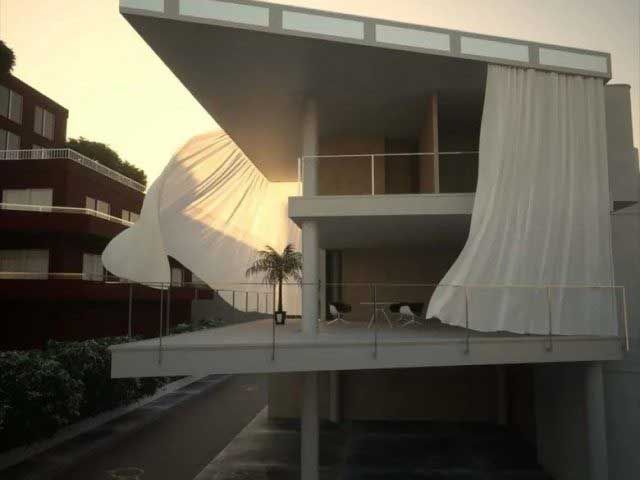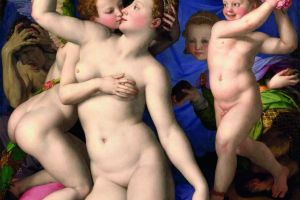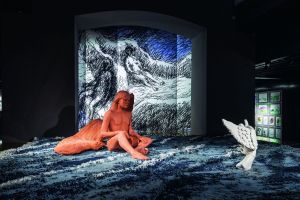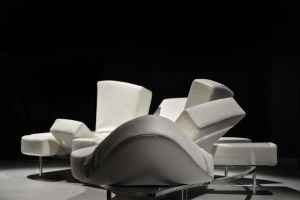
октября 2023
Laura Arrighi
Soft living
Fabric as an expression of a new form of domesticity
A house in the void, suspended in the centre of a large white room and lit by skylights that allow opaline light to filter through, enhancing the transparencies and seams from which this domestic space, which is both realistic and immaterial is made. It is 1999 and we are at the Baltimore Museum, where the young Korean artist Do Ho Suh presents one of his first works, the Seoul Home, a fabric house that reproduces his childhood home in all details using a tailoring technique. This is a protective object, like the domestic nest in which the artist grew up. Yet it is, at the same time, fragile, light, transparent and soft. For the artist, the home is a place in which the idea of comfort is linked to emotional, sensorial and tactile values. In the vision that Do Ho Suh suggests, and that characterises our contemporary times, the role of textiles becomes central. It is mainly thanks to these that we move away from the formal and ergonomic parameters that dominated the production of domestic environments from the 1930s through the latter part of the last century.
Testimony to this paradigm shift is the semi-transparent fabric, raised in a corner, that OMA exhibited in 1980 at the Strada Novissima of the first Biennale di Architettura di Venezia, entitled La presenza del passato (The Presence of the Past): a curtain, i.e. an unstable and changeable membrane that, ahead of its time, defined a new condition for architecture and design. Another example is the Shigeru Ban's Curtain Wall House of 1994: a volume in which the main façade is replaced by a curtain covering twice the height on which the spaces are developed. Again, we have Petra Blaisse's textile revisitation of Villa Floirac, a famous project by Rem Koolhaas' OMA studio. It is an intervention in two acts (1998 and 2013): a series of gestures made of textiles, dissolving boundaries and making traditionally static elements mobile in order to functionalise, change the setting and atmosphere of rooms, and combine interiors with the external landscape, creating ever new and changing relationships.
From being a purely decorative and upholstery object, textiles began to become a real design tool - for architecture, interiors and furnishings - marking the transition to a new way of living. The is softer, plush living that embraces “a global component in which psychological perception, sensory experience and ergonomic correctness merge into a single universe of both physical and mental compatibility. The new comfort thus conceived [...] redefines the new domesticity [...] The need to lighten up, to slow down the experience in a way that is increasingly complex and loaded with signs, stimuli and information, becomes an increasingly shared need that is expressed at different levels” (Francesco Morace, 2006).
The project began to look in more detail at all those materials that, together with fabric, created a new language. This is what Francesco Binfaré called the language of softness: “I like sofas because they are soft. And soft material has a recent history. In the ancient world, design was always hard, at best feathers and horsehair were used to soften stiff materials. Softness is a language yet to be discovered. It is a journey that fascinates me.”
It is no coincidence that the adjective “soft” (in Italian, morbido) is used by Beppe Finessi for the title of the La Casa Morbida (Soft House) exhibition, which opened at the Poldi Pezzoli Museum in Milan in March 2014. The exhibition is a collection of works, new hybrid “products” derived from fashion, art and design, which put the spotlight on a renewed interest in the world of textiles. It is a response to rampant technology, but also as a new way of thinking and conceiving the space around us and the objects we interact with.
Objects such as those produced at Edra, which interpret softness as a real predisposition to preferring tactile consistency over formal invention, or matter over sign.
The soft design project - executed by Edra artists, Francesco Binfaré, as well as the Campana Brothers and Masanori Umeda - passes through the accurate study of structures, materials and interior technologies, to arrive at the design of fabric as a pure, simple and sincere expression of the product's soul: it is soft, exciting, and high-performance. It is no longer a simple covering, but it becomes “clothing”: an element closely linked to the “body to be dressed”. Even when this body is the body of a piece of furniture.
 |
Laura Arrighi Architect with a PhD in Design, and freelance web writer and editor. She mainly works in interior decoration, design and fashion and has a special interest in the hybridization of different disciplines. She juggles writing, research, teaching and design, as she works for public institutions and some of the most important Italian architectural firms. |











